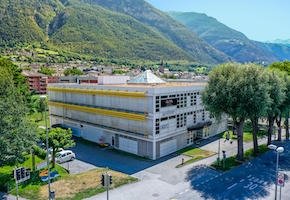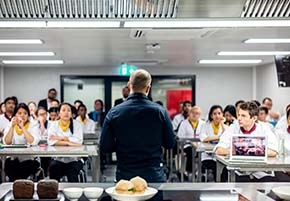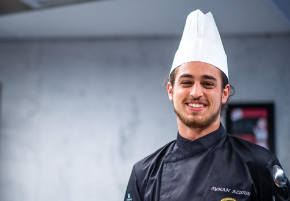- About
- Programs
- Campus Life
- Career Services
- Admissions
- News & Events
- Alumni
Understanding mise en place: What is mise en place?
Learn about the essential culinary concept of mise en place, a systematic approach to organizing and preparing ingredients and tools before cooking, ensuring efficiency and precision in the kitchen.
What is mise en place? "Mise en place" is a French phrase that translates to 'putting in place.' This fundamental culinary concept describes the systematic approach of organizing and preparing all ingredients, tools, and equipment prior to cooking. It's a technique that was coined by professional kitchens for its efficiency and effectiveness in creating a smooth workflow and enhancing the overall cooking experience.
Origins and Definition of Mise en Place
What does mise en place mean? Mise en place, meaning 'everything in its place,' is a principle that originated in the late 19th century in France's culinary schools and professional kitchens. The renowned French chef, Auguste Escoffier, is often credited with formalizing and popularizing the concept. Escoffier understood the importance of meticulous preparation and organization in the kitchen to ensure an efficient and timely cooking process. He emphasized that having all the necessary items within reach saved time and minimized errors.
The Benefits of Mise en Place
Implementing the principle of mise en place in the kitchen offers several benefits. By preparing and organizing all the necessary ingredients and tools in advance, chefs can work more efficiently during the actual cooking process. This systematic approach not only improves the workflow but also reduces the chance of errors or omissions in the recipe. So, what does mise en place do? It enhances organization and time management. With everything prepared and within reach, chefs can concentrate solely on the task at hand, leading to increased focus and attention to detail. Additionally, by preparing ingredients ahead of time, chefs can better estimate the time needed for each step of the cooking process, ensuring the right timing for each component of a dish. Overall, incorporating mise en place into the cooking routine improves efficiency, organization, and time management, leading to the creation of delicious and beautifully executed dishes.
Implementing Mise en Place: A Step-by-Step Guide
What is mise en place in practical terms? When implemented correctly, mise en place can transform the cooking process, making it more efficient and less stressful. Here's a step-by-step guide to implementing mise en place:
- Understand the recipe: Study the recipe to understand the cooking process and identify all required ingredients and equipment.
- Prepare ingredients: Gather all the necessary ingredients and prep them as required, washing, peeling, chopping, and measuring as needed.
- Set up equipment: Ensure all required tools and equipment are clean and easily accessible.
- Arrange ingredients: Organize the prepped ingredients in the order of their use to simplify the cooking process.
- Label containers: If using multiple containers for different ingredients, label them to avoid any confusion during cooking.
- Maintain a clean workspace: Keep the workspace clear of unnecessary items, creating a clean and organized environment.
- Start cooking: With mise en place complete, start the cooking process, following the recipe and adding ingredients as instructed.
By being organized and prepared, chefs can focus on the culinary craft, creating delicious meals with ease and confidence.
The Role of Mise en Place in Culinary Arts
What is mise en place's role in professional cooking and culinary arts education? Mise en place plays a vital role. It helps chefs work more efficiently by having all ingredients ready for use, allowing them to focus on cooking techniques and presentation without interruptions or delays. Furthermore, it encourages consistency in flavor and texture, as the precise quantities and preparations are planned in advance.
In culinary schools, students are taught the importance of mise en place. They learn to set up their workstations correctly, measure ingredients accurately, and arrange their tools and equipment effectively. This training is essential for success in the fast-paced world of professional cooking.
More than just a practical technique, mise en place represents a mindset and approach to cooking that reflects professionalism and respect for the craft. It instills a sense of order, discipline, and precision, enabling chefs to create culinary masterpieces with efficiency and finesse.



















